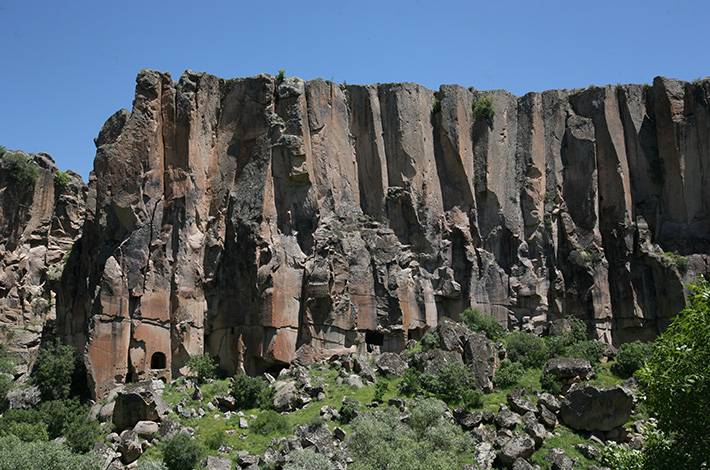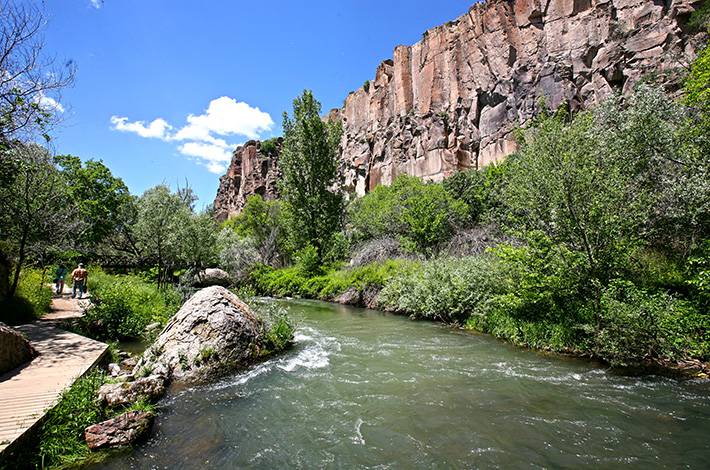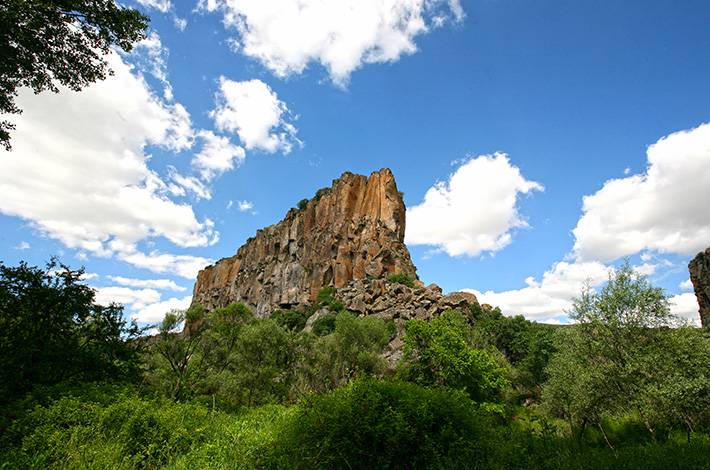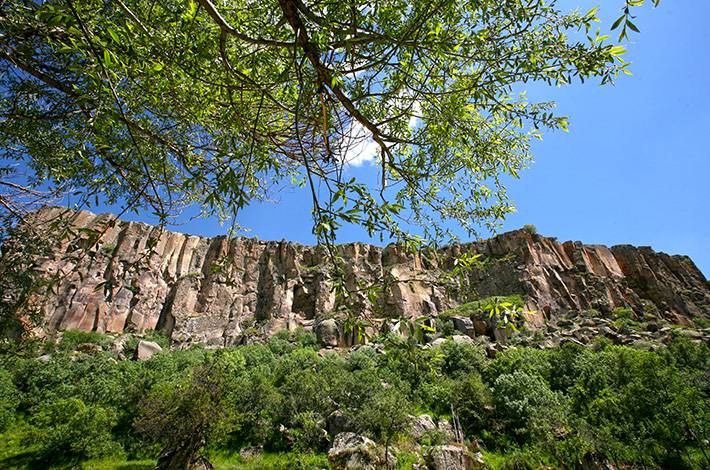The Ihlara Valley Archaeological Site Ihlara Valley is situated in Güzelyurt district of Aksaray province. It is one of the world's largest canyons, stretching 14 kilometres in length and reaching depths of up to 120 meters at certain points. The valley's distinctive formation has drawn people to it throughout history. During the early Christian period, it was a significant religious centre with numerous churches and monasteries carved into the rock. While exploring the valley, you will come across stunning natural rock formations and discover churches carved into these rocks, adorned with beautiful frescoes. The mummies of cats In the Cappadocia region, similar to ancient Egypt, embalmment of cats was practiced in the past. A total of 17 mummies dating back to the 10th and 13th centuries have been discovered in the Ihlara Valley. Twelve of these mummies are exhibited in the Aksaray Museum, while the remaining five are exhibited in the Niğde Museum. The tradition of embalming cats was carried out in the name of 'Bast', the Egyptian goddess with a cat head. This tradition reached Anatolia and was maintained in the Cappadocia region too. Ağaçaltı Church (Daniel Pantonassa) Ağaçaltı Church has a free cross plan. The central space is covered with a dome with a high pulley and the cross arms are covered with barrel vaults. The frescoes in the church are dated to the 9th-11th century. The frescoes depict biblical stories such as the Annunciation, Adoration of the three Maggies, Holy Baptism, Koimesis (the death of Mary), Daniel Among the Lions, the Ascension of Jesus, and the Apostles and Prophets. Kırkdamaltı (St. George's) Church Kırkdamaltı Church is located in Belisırma Village in Ihlara Valley. The church with an irregular hexagonal plan has a flat ceiling. The ceiling was carved concave in front of the apse in the east. The demolished apse is used as an entrance. The original door is on the north wall. The church has been decorated by Lady Tamar, wife of Amirarzes Basileios in the period from 1283 to 1295 during which Sultan Mesut II and Emperor Andronikos II were reigning. The patroness, shown in the depiction with a model of the church in her hand, is probably a princess of Georgian origin. The other frescoes indicate the scene of Deesis, Metamorphosis, Ascension etc.
IHLARA VALLEY







